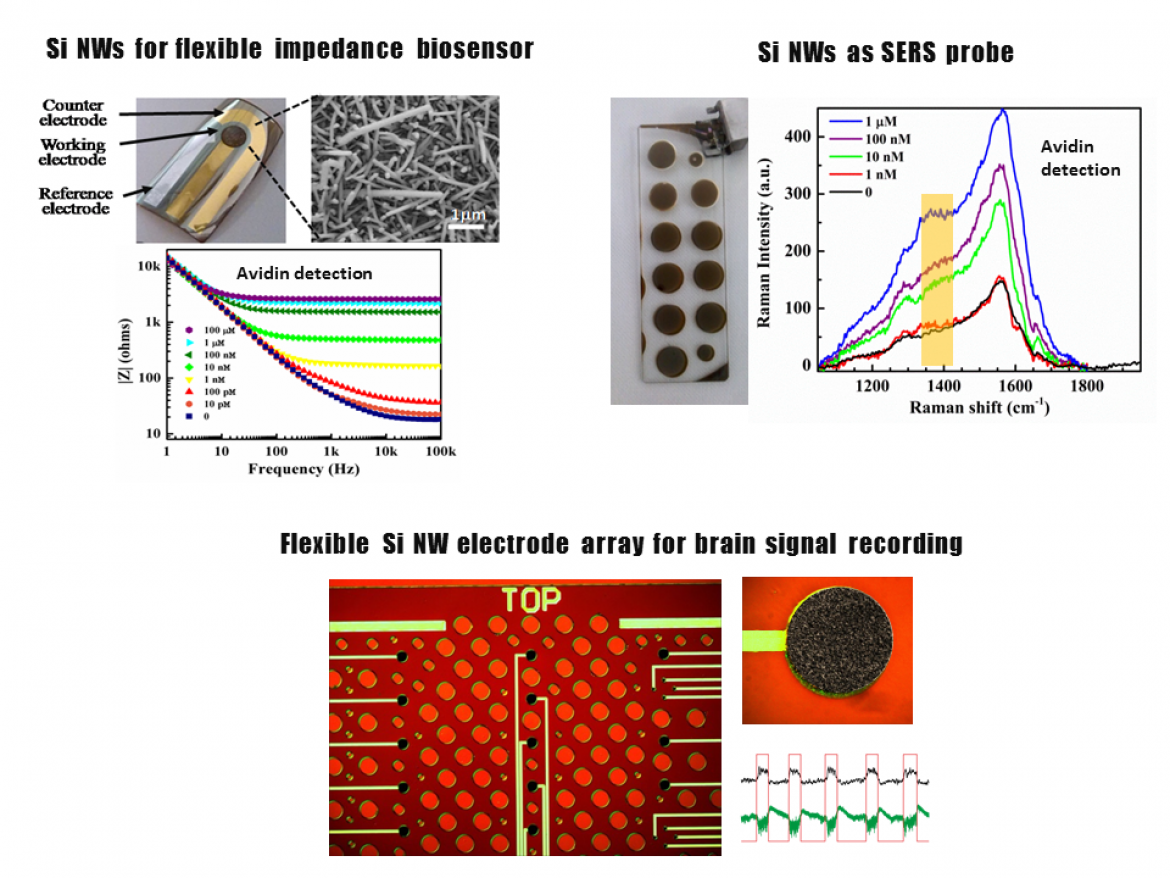
Silicon Nanowires (SiNWs) are expected to play a crucial role in the fields of the biodetection and nanomedicine. Indeed, their unique electronic/optical properties, nanoscale diameter, huge surface-to-volume ratios and facile surface modification make these materials the natural probe and interface to biological entities, including proteins, nucleic acids, cells and viruses. Highly disordered and randomly oriented SiNWs offer remarkable technological advantages and versatility in the design of performing biosensors. The key benefit is that disordered SiNWs can be easily obtained through high yield and large-area fabrication techniques as well as relative low temperature (350°C) procedures compatible with polymeric films, i.e. Polyimmide, and glasses. The accommodation of SiNW based biosensors on plastic and glass provides an effective and cheap method to integrate these sensing nanoelements into macroscopic and/or commercial readout devices including assay plates and microscope slides implementable in benchtop microscopies.
We use highly disordered array of SiNWs covered by a film of Au (Au/SiNWs) as performing electrochemical biosensor and Raman probe, allowing ultimately the combination of SERS detection with impedance control. Au covered SiNWs have been also integrated We have also developed ultra-flexible NW-based electrodes array for brain signal recording.
doi: 10.1038/srep25099
doi: 10.1002/adhm.201500538
http://dx.doi.org/10.1016/j.apsusc.2016.01.135
doi: 10.1149/07516.0157ecst
Contact: Dr Annalisa Convertino (annalisa.convertino@cnr.it)


